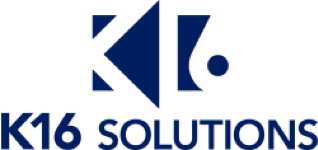Why Higher Ed Needs a Better Data Integration Solution
Many data integration solutions in higher education claim to ensure efficiency, data accuracy, and a positive experience for both students and staff while enabling data-driven decision-making and adaptability to changing technology landscapes.
This type of solution is crucial for higher education institutions to:
- Effectively manage their operations,
- Deliver high-quality education,
- And stay competitive in an increasingly tech-driven world.
Unfortunately, most data integrations don’t do what they say they will. The majority of institutions must manually pull and extract data from various systems, compile them into multiple spreadsheets and reports, and still might be unable to see the data points they need to make the most strategic decisions.
If this technology is so vital for the success of an institution, why do many continue to work with outdated solutions? What does the future of higher education look like with a solution that truly works?
This blog will tackle these questions and more. Let’s start by identifying what higher ed leaders really want in a data integration solution before explaining some current challenges in unifying data and what a superior data solution looks like.
What are higher ed leaders really looking for in a data integration solution?
While there are many benefits to this important technology, here are the three most significant advantages to data integrations in higher education (assuming a solution works well):
- Efficiency and accuracy,
- Give data more value,
- And improved student insights.
1. Efficiency and accuracy
Better integrating the data from various EdTech systems can ensure that there is a clean single source of truth that all stakeholders can rely on. This consistency reduces discrepancies and ensures that everyone works with the same data, improving accuracy.
Effective data integration solutions can also reduce the manual work required to pull and extract data from various systems, compile and compare them, and interpret meaning from them.
2. Give data more value
The ideal data integration solution will take full advantage of how valuable your data is by presenting it in a way that allows you to make more strategic, data-driven decisions. You should be able to access all the data that you need easily and know where it came from as well. Otherwise, you just have a bunch of data points floating around that are difficult or even impossible to interpret.
3. Improved student insights
The right data integration solutions provide academic technologists with improved student insights, including data that points to high-risk students for timely intervention. These insights can help institutions improve student retention rates and even grow enrollments.
What are some challenges to integrating disparate systems?
The above advantages sound great, but in reality, most data integration solutions don’t do what they say they will and are incredibly difficult to implement and use. Below are some top challenges that higher ed leaders face when trying to unify systems with typical data integration solutions:
- Lengthy, cumbersome implementation processes that can take up to two years
- Tools that can’t communicate with each other
- Unorganized data and duplicate databases
- Mistakes in data from one system to another
- The use of too many tools that don’t work synergistically
- The need to convince leaders that new technological solutions are needed
What does a superior solution look like?

The majority of academic technologists aren’t happy with their current data integration methods, but it doesn’t have to be this way. A robust data integration solution allows institutions to push and pull the data they need into easy-to-understand reports.
Scaffold DataX can bridge the gaps where current integrations are failing. Here are the top three benefits of using DataX:
- Simple, easy implementation,
- Report transparency,
- And eliminate data silos for good.
Simple, easy implementation
A long, arduous implementation project is one of the biggest drawbacks to typical data integration solutions. In fact, the average project takes up to 2 years and requires significant manpower to put together. Most institutions need multiple academic technologists and data engineers working on the project at once to get it going.
The right data integration solution provides institutions with simple, easy implementation. It’s possible to unify systems in as little as a few months without extra staff focusing on the project.
Report transparency
Institutions often hire consultants to build custom reports, and while these reports can be helpful, the problem is that schools get no transparency into the data model and no documentation of where that data is coming from. This doesn’t work for long-term growth.
An ideal solution allows institutions to see exactly what data points they are pulling and from where.
Eliminate data silos for good
Valuable data in higher ed often remains clunky and sometimes even unusable. A robust data integration solution can be the bridge that closes the gap between data silos. This type of solution can provide simplified reporting that’s easy to read and understand without extra training or staff required.
The future of data governance in higher education is a better data integration solution
With Scaffold DataX, the future of data governance in higher education is here. DataX allows institutions to:
- Implement in months, not years,
- Receive report transparency,
- Build custom reporting that can improve retention and completion rates,
- And eliminate data silos for good.
Starting with Canvas (LMS) and Ellucian Banner (SIS), Scaffold DataX extracts the data from those systems, places it in a neutral data model, and stores it in a data lakehouse so that student submissions (discussions, quizzes, assignments, etc.) are available with grades, course progression, demographics, and related data. The result is a unified, complete, and more accurate view of that enterprise data.
Want to see how DataX can work for your institution? Schedule a free demo with one of our data integration solution experts.


